INDIAN ARMED FORCES CHIEFS ON
OUR RELENTLESS AND FOCUSED PUBLISHING EFFORTS

SP Guide Publications puts forth a well compiled articulation of issues, pursuits and accomplishments of the Indian Army, over the years

I am confident that SP Guide Publications would continue to inform, inspire and influence.

My compliments to SP Guide Publications for informative and credible reportage on contemporary aerospace issues over the past six decades.
Modi in China — Trust deficit remains
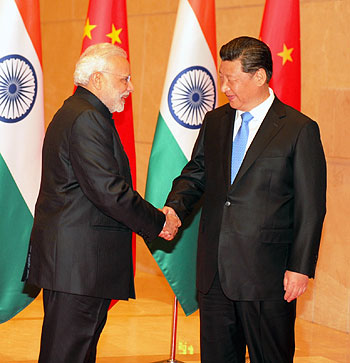
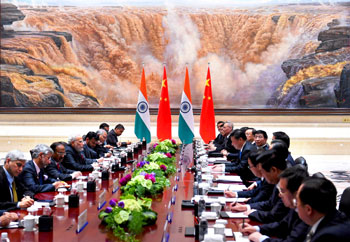
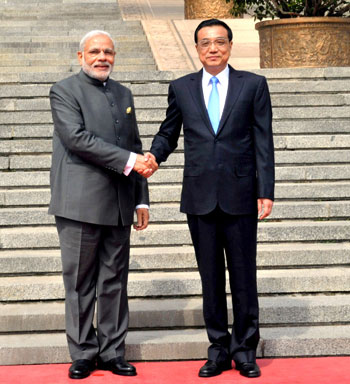
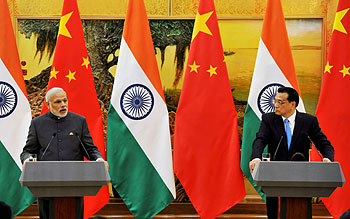
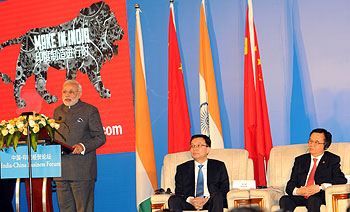
Prime Minister Narendra Modi’s much-hyped visit to China was significant in itself, but it did not yield substantial results. However, in spite of the prevailing and deepening trust deficit, on issues ranging from border and territory to strategic ones like the Indian Ocean and the South China Sea and China’s stand on various international organizations vis a vis India’s membership of UNSC and NSG and other export control regimes, the Chinese leaders did not hesitate from extending a warm welcome to Modi as if the two neighbors were the closest partners in international arena and were close allies.
In fact, one Chinese newspaper has compared Modi’s visit to Nixon’s visit to China in 1972, which paved the way for dramatic rapprochement between the two nations. But in the current context, strategic equations cannot be said to be the same. Nixon visited China at the height of the cold war and needed China to counter the Soviet Union. In present day world politics, India does not need China for such power balance. India is already appearing to be closer to USA and its western and Asian allies.
On the other hand, China seems to be wooing India. A commentary in the Chinese official news agency, Xinhua said, “This is a chance for the two Asian neighbors to consolidate trust. The world’s two largest developing countries should become global partners for strategic coordination and jointly strive for a just and equitable international order.”
Undoubtedly, there was much display of bonhomie by the Chinese leaders, which in fact speaks volumes of the emergence of India as a new player in the world power game and Modi as a new star on the world scene who promises to transform India as an economic giant and make India’s billion plus consumer market easily accessible to them. They also need Modi and his India in the context of the fast changing geopolitics of the world, in which India appears to be a power balancer. The way India declared its convergence of its ‘Act East’ policy with the US Asia Pacific policy during President Barack Obama’s Republic Day visit to India this year, had created much suspicion and apprehension in Chinese strategic circles. If India formally aligns with Asia-Pacific rebalancing policy in the Asia-Pacific region, it would heavily tilt the balance in favor of USA and China would be left fuming. Though China single handedly plans to tackle these emerging forces in the Asia Pacific region, it would add to its credibility if India was on its side. Hence, the Chinese have been wooing India to join its extremely ambitious multi-billion dollar ‘One-Road One-Belt’ silk road projects, which would not gain international credibility without India’s active participation in it.
In this background, the international strategic observers were keeping a close watch on the visit of Indian Prime Minister to China from May 14 to 16, during which President Xi Jin Ping went out of way to impress and influence Modi with the characteristic Chinese charm . However, this did not prevent Modi from raising concerns on border related issues, which according to him elicited good response from the Chinese leaders. Whenever any Indian leader visits China or Chinese leader visits India all eyes are gazed on the undisclosed confabulations on the border issue, as that concerns each and every Indian citizen. The issue is uppermost in the minds of ordinary Indians. Hence, responding to their concerns, the Prime Minister went out of his way to emphasize to Chinese leaders the need for an early resolution of the boundary issue so that both the nations are free from the shackles of the boundary problem.
The un-demarcated 4000 kms long Sino-Indian boundary keeps Indian soldiers on tenterhooks and requires huge military expenditures to safeguard territorial interests. But the Chinese seem to be taking it easy as they have been saying since the days of Deng Xiao Ping to leave the resolution of the boundary issue for the coming generations, which according to them is a left-over of hiStory and cannot be solved overnight. Hence the Chinese leaders have been telling to Indian leaders that boundary issue can be settled at a proper time and meanwhile move on in other areas of relationships such as economy, trade, culture and tourism.
However, the Chinese leaders seem to have realized that to keep Indians in good humor, they must ensure that the Line of Actual Control remains calm and tranquil, hence they have agreed with the Indian government to take additional military confidence building measures on the ground, for which the two nations have decided to set up a hotline between the two army headquarters. Besides, additional points along the frontiers would be opened up to enable local commanders to hold crisis management meetings. The last year’s incursion in Chumar area of Eastern Laddakh during the September visit of President Xi Jin Ping was a stark reminder of the fact that how such incidents can derail the very cordial diplomatic and political relations at the highest level, In fact, even during the May 13 visit of Chinese Premier Li Ke Qiang to India an incursion happened in the Depsang valley, 20 kms inside Indian areas. When the Chinese refused to withdraw from the Indian side, the then visiting Indian Foreign Minister Salman Khurhsid had to frankly tell the Chinese officials that India will be forced to call off the visit of the Prime Minister Li Ke Qiang to New Delhi, which was slated to be his first foreign jaunt after becoming the Prime Minister.
The defence and military exchanges were suspended in 2010 in the wake of the ‘Staple Visa’ controversy for the residents of Jammu and Kashmir. That time the Chinese had gone to the extent of issuing the staple visa to the then Indian Northern Army Commander. The defence relations were resumed after the Chinese stopped issuing the staple visa to the residents of Jammu and Kashmir. Though India has also raised the issuance of staple visa to the residents of Arunachal Pradesh with the Chinese government, it did not prevent India from agreeing to further deepen resumed defence exchanges. Both the governments have decided to resume the naval passage exercises and visits of defence ministers of both the countries.
Besides the defence sector, huge trade imbalance has been of prime concern to the Indian public. India relented and agreed to open up the Indian market for Chinese goods, without any reciprocal arrangement from China to open their pharmaceutical and information technology sectors for Indians. The result is that in the overall bilateral trade of over US$ 70 billion, India has suffered a loss of over US$ 40 billion.
The Chinese too complained about the strict visa regime of the Indian government, which prevents an ordinary Chinese citizen and trader to visit India without any hitch. In spite of objections from the Indian security establishment Modi took a very bold stand and surprised the Indian and Chinese observers when he announced in front of a Chinese audience in Shanghai, India’s decision to facilitate e-visa for Chinese citizens, without any reciprocal arrangement.
During the visit business deals worth over US$ 20 billion were signed which will deepen Chinese engagement with India. Observers opine that the more the Chinese are enmeshed in Indian business and economic activities the less will be the chances of China entering into a direct confrontation with India.





